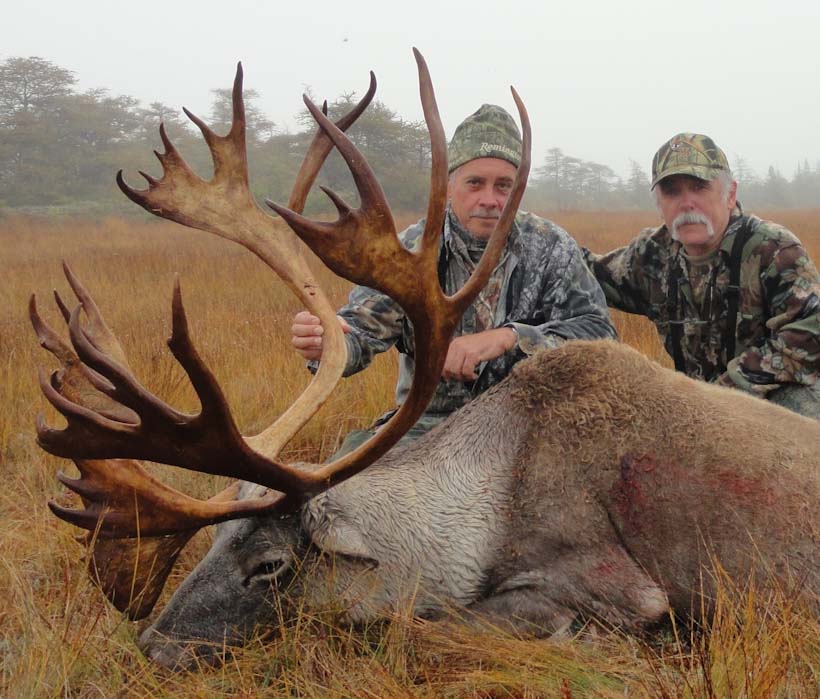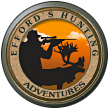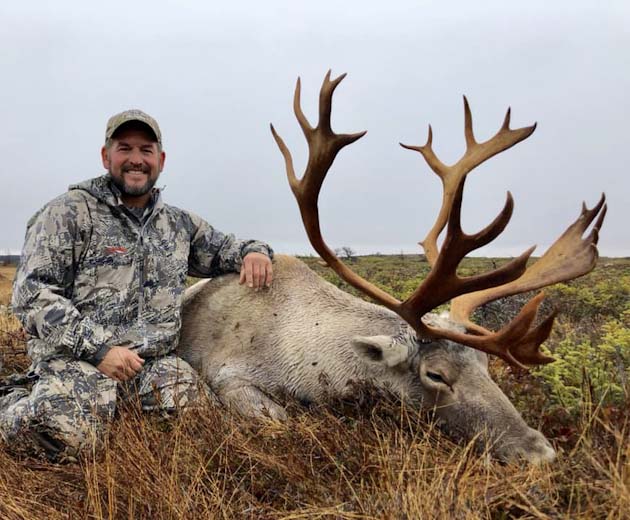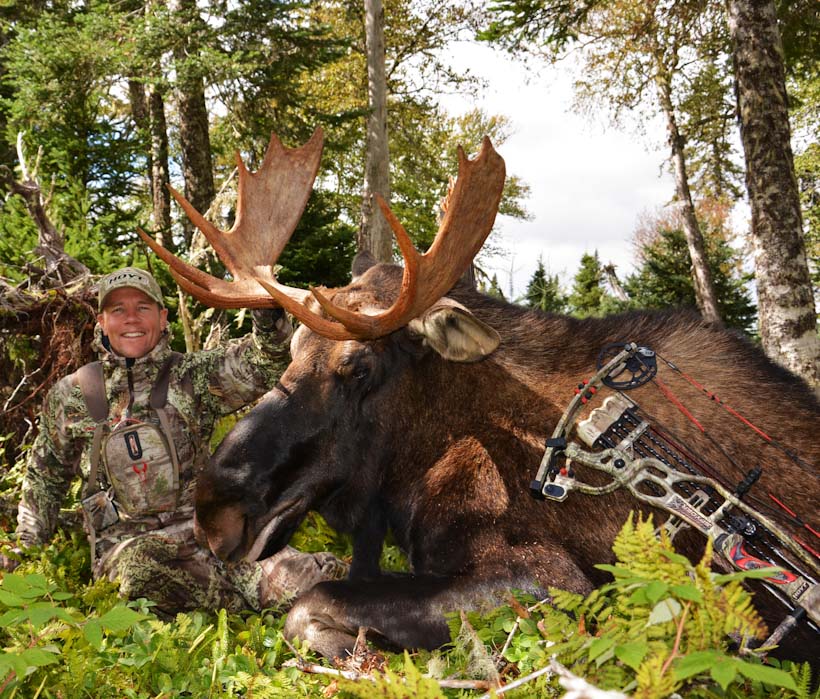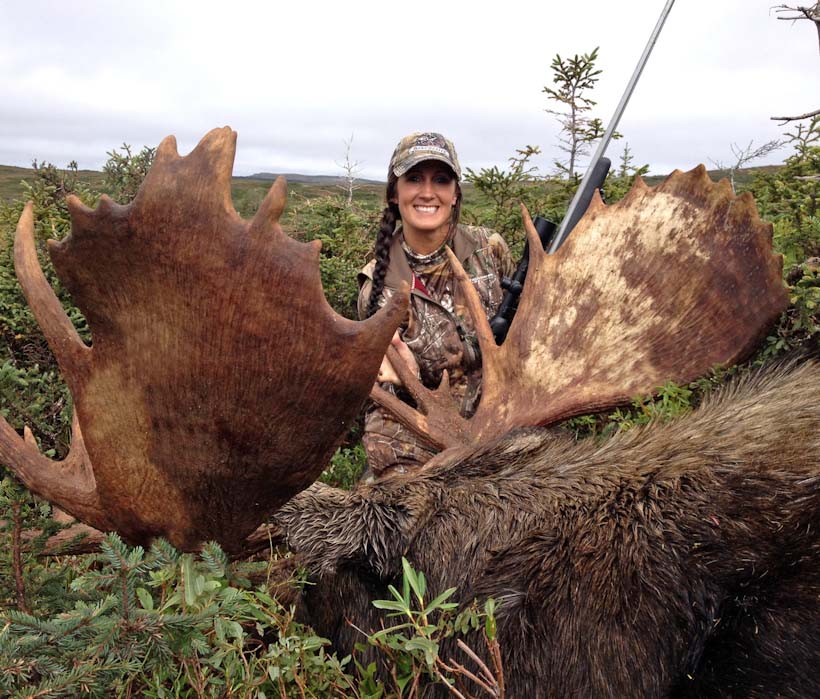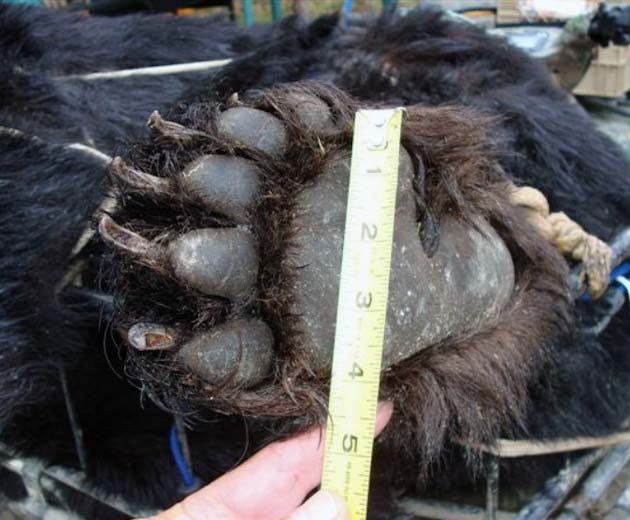The Woodland Caribou
The Woodland Caribou (Rangifer Tarandus), a North American Deer of the same family as the Eurasian Reindeer (Cervidae), is the most widely distributed mammal in Canada, and Newfoundland is home of the world’s most Southerly herd. Although there are small numbers of WOODLAND CARIBOU in other locations, Newfoundland offers the only opportunity to take this trophy, with a herd numbering at approximately 30,000 and remaining stable. The WOODLAND CARIBOU, which are darker and stockier and have heavier antlers than Barren Ground (or Arctic) caribou, were once common from Maine to Montana, but are now found mainly in Canada, particularly in Newfoundland. Both the males and females have antlers, but the female’s are smaller and less impressive. They usually live in small herds of cows and calves and a few bulls. Most of the older bulls stay in separate small bands, except during rut, and travel on the fringes of migrating herds. Breeding usually takes place from early October to mid November, and the calves are born in May and June. Large males, weighing upwards of 500 lbs. and sporting an impressive mahogany colored antlered crown is beautiful to see and a challenge to hunt.
